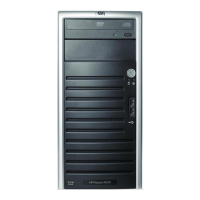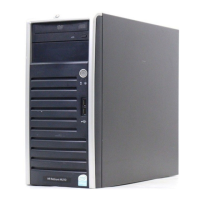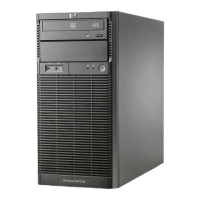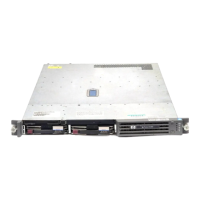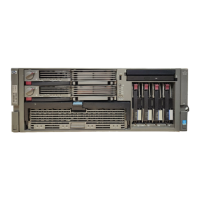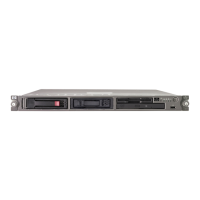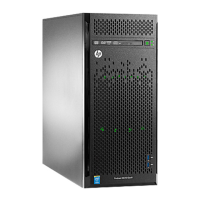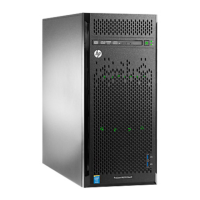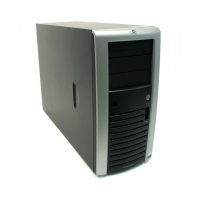38
Figure -6 [Load defaults screen]
Clearing CMOS
You may need to clear the Setup configuration values (CMOS) if the configuration has been corrupted, or if
incorrect settings made in the Setup Utility have caused error messages to be unreadable.
To clear CMOS:
1. Perform the pre-installation instructions listed in Chapter 2.
2. If necessary, remove any accessory boards or cables that prevent access to the system configuration switch.
3. Locate the system configuration switch (SW50) on the system board.
4. Press the switch. AC power must not be connected.
5. Perform the post-installation instructions listed in Chapter 2.
6. During POST, press F10 to access the Setup Utility.
7. Set time, date, and other system values.
8. Press F10 to save the changes you made and close the Setup Utility.
NOTE: Clearing CMOS deletes all system configurations and password settings.
Power-On Self Test (POST)
Before you can use a server, all devices must be tested and initialized, and the operating system must be
bootstrapped to the memory. This is referred to as Power–On Self–Test or POST. POST is a series of diagnostic
tests that checks firmware and hardware components on the system to ensure that the server is properly
functioning. This diagnostic function automatically runs each time the server is powered on.
These diagnostics, which reside in the BIOS ROM, isolate server-related logic failures and indicate the board or
component that you need to replace, as indicated by the error messages. Most server hardware failures will be
accurately isolated during POST. The number of tests displayed depends on the configuration of the server.
During POST you can:
• Press ESC to skip the HP logo and go to POST boot progress display system summary screen.
• Press F8 to display the Boot menu.
• Press F10 to access the Setup Utility.
• Press F12 to request a network boot (PXE).

